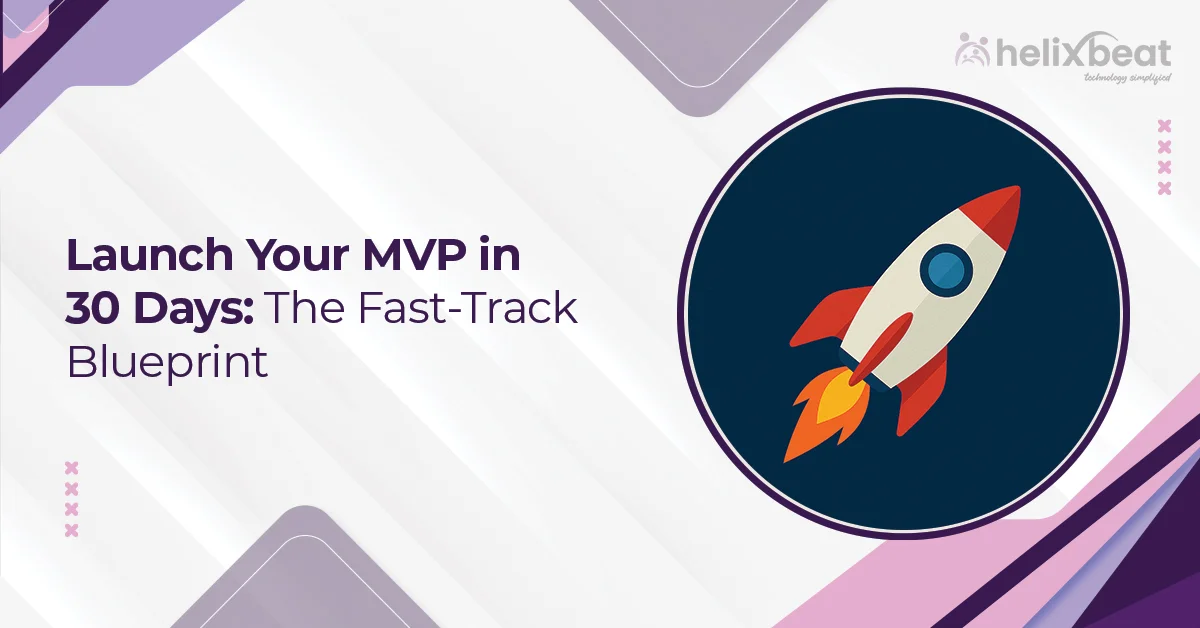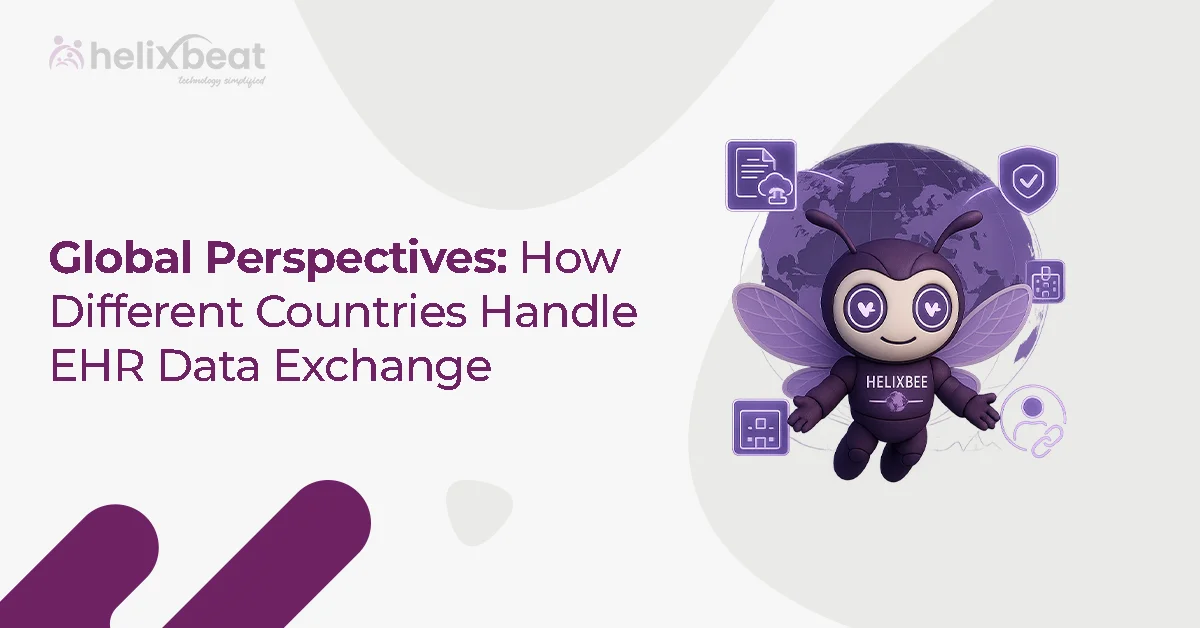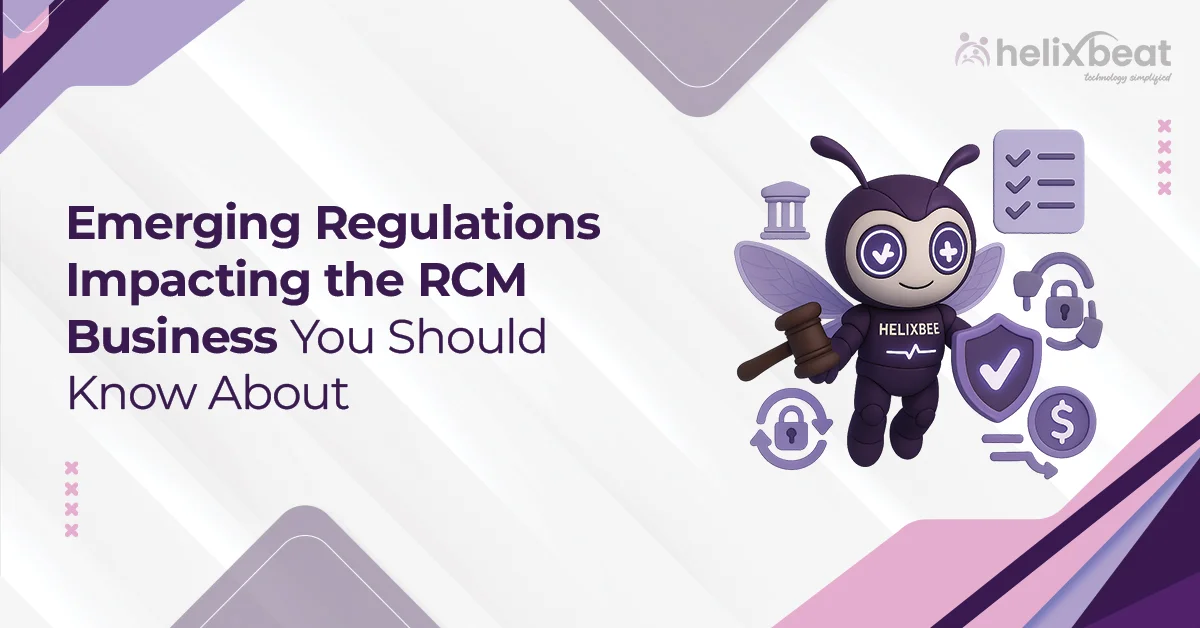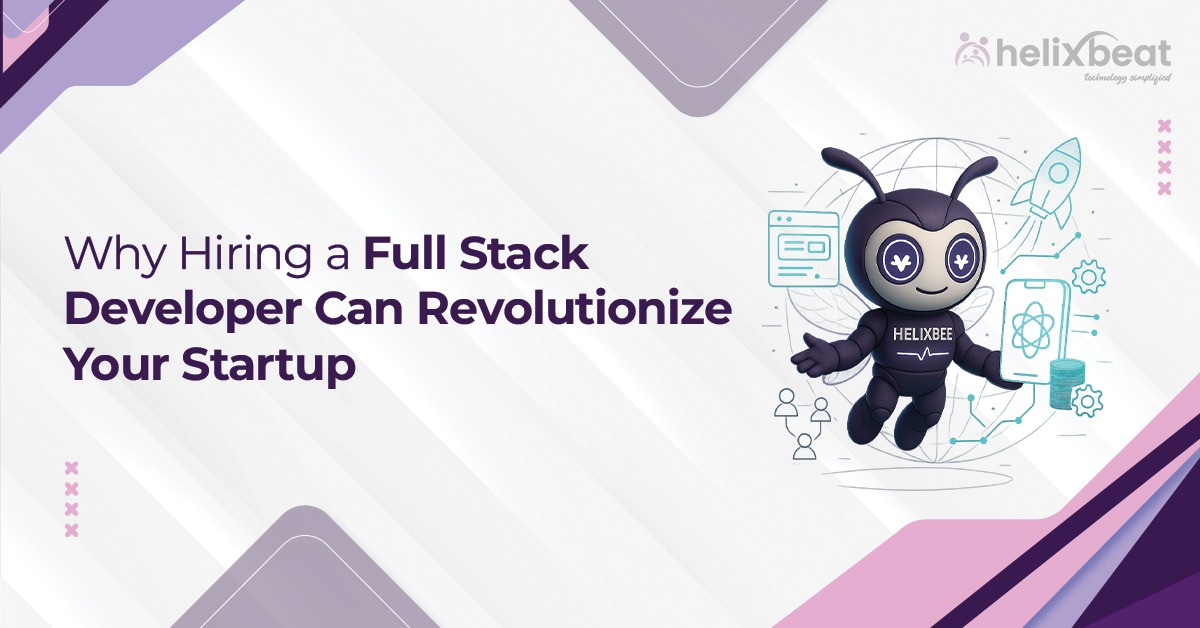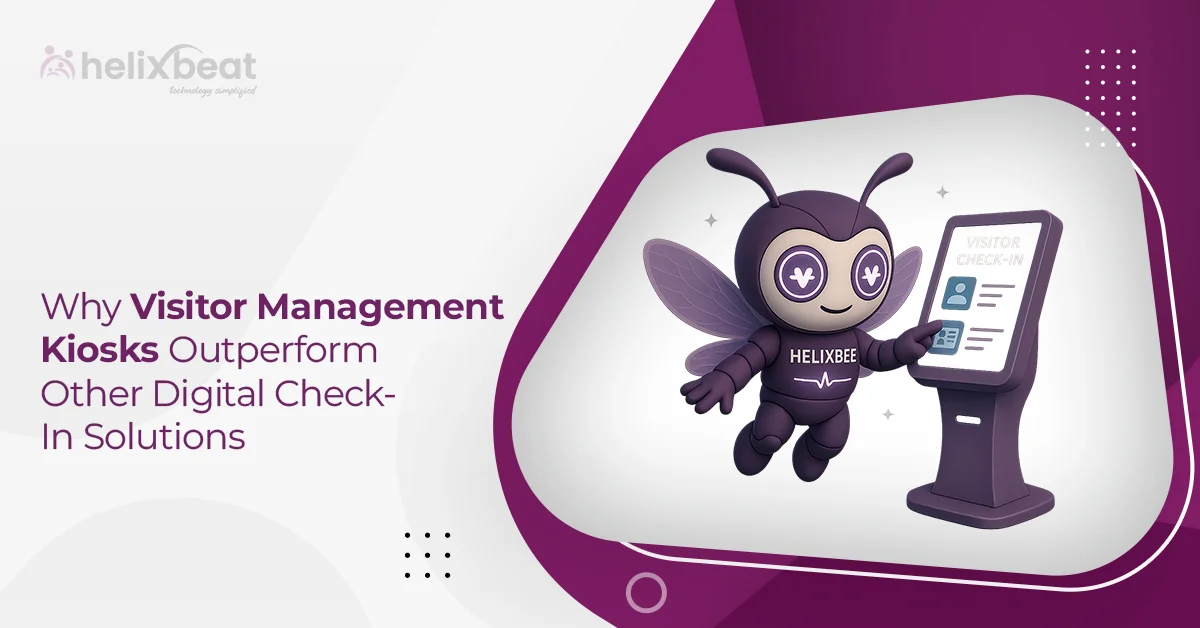You have a great product idea. But turning that idea into a full-scale product can take 6–12 months, draining your time, budget, and energy without knowing if the market even wants it. That’s the problem most startups face. They build in isolation, launch too late, and miss out on early user feedback, launch a product that flops.
The solution? MVP development services.
By launching a Minimum Viable Product (MVP) in just 30 days, you can test your idea in the real world, gather feedback from actual users, and start refining it before investing heavily. This approach not only cuts costs but also accelerates your path to product-market fit.
In this blog, we’ll outline the fast-track blueprint for launching your MVP efficiently.

Table of Contents
Understand the Difference Between MVP and A Full-Scale Product
| Aspect | MVP | Full-Scale Product |
| Time to Market | 2–6 weeks: built fast to validate the core idea. | 6–12 months: developed for long-term use and scalability. |
| Budget | $10K–$50K: lean and cost-effective, ideal for startups. | $150K–$500K+: requires larger investment for feature-complete product. |
| Team Size | 3–5 people: small, agile team. | 10–20+ people: includes specialists across departments. |
| Feature Set | Focuses on 1–2 core features to test product-market fit. | Includes full functionality, advanced UX, and multiple integrations. |
| User Base Goal | Targets early adopters and test users (100–500 users). | Built to serve thousands or millions of users at scale. |
What are the different Types of Product Launches?
Launching a product is a key milestone where your idea becomes a usable solution. For startups using MVP development services, this phase is essential to validate assumptions, gather user feedback, and shape future development.
The way you launch matters. Choosing the right approach can influence user adoption, product improvements, and long-term success. Below are the three most common types of product launches used by startups and growth-stage companies.
1. Soft Launches
A soft launch involves releasing your MVP to a limited segment of your target audience, often within a specific location or user group. This strategy is commonly used by startups seeking to reduce risk and test assumptions before scaling further.
Key objectives of a soft launch include:
- Gathering early user feedback to identify improvements
- Assessing if users are willing to pay for the product
- Testing different pricing or monetization models
- Refining usability and addressing overlooked issues
A soft launch focuses on who you release your product to. It is not the same as an MVP launch, which is about what you’re launching. The two often overlap but serve different functions. Startups working with MVP development services for startups typically begin with a soft launch to validate their idea in the real world.
2. Hard Launches
A hard launch is a full-scale public release of your product, typically accompanied by marketing campaigns, PR outreach, and customer onboarding strategies. It is usually reserved for products that have gone through validation and internal testing.
Hard launches are ideal when:
- You have a stable, well-tested product
- Your infrastructure can support a large number of users
- You already have an established user base, or following
- You’re ready to scale aggressively with promotional activities
Unlike soft launches, hard launches offer broad exposure but come with greater visibility and expectations. They work best for products that have already been tested or for companies that have launched products before.
3. Dark Launches
A dark launch refers to releasing a new feature or update to a small set of users without public announcements or visible indicators. It is typically used to test functionality in real-time and gather unfiltered data.
Why dark launches are effective:
- They allow for silent feature validation without influencing user behavior
- Performance can be monitored in a real-world setting with minimal disruption
- Rollouts can be controlled and scaled gradually based on data
- Risks are minimized since changes are limited to a small audience
This approach is commonly used in continuous delivery environments supported by expert MVP software development services, especially when introducing backend changes or experimental features.
Checklist before MVP Product Launch
1. Define Clear Success Metrics
Before launching, identify specific, measurable goals like user activation rate, retention after 7 days, or paid conversions. These metrics will help validate product-market fit and guide your next decisions.
2. Validate Problem-Solution Fit with Real Users
Don’t rely on assumptions. Conduct interviews, beta tests, or usability sessions with your target users to confirm your MVP genuinely addresses a meaningful problem worth solving.
3. Build Only What’s Critical to Learn
Focus on the core functionality that tests your riskiest assumption. Avoid overbuilding. A lean, well-targeted MVP helps you collect sharper insights and pivot faster if needed.
4. Prepare a Scalable, Lean Tech Setup
Work with your MVP development team to choose flexible, cloud-based infrastructure that can handle early user activity without adding long-term technical debt or unnecessary overhead.
5. Create a Pre-Launch User Funnel
Have a plan to attract and onboard early users, such as a landing page, waitlist, email drip campaign, or niche community outreach to gather valuable post-launch feedback immediately.
5 Effective Strategies for Successful MVP Launch
A successful MVP launch isn’t about perfection; it’s about learning fast, iterating smart, and keeping your resources focused. For entrepreneurs relying on MVP development services, speed, clarity, and strategy are key to entering the market with confidence. Below are five actionable strategies to help you launch effectively:
1. Focus Only on Core Features That Solve One Key Problem
Your MVP should offer a solution to a single, clearly defined user pain point. Avoid building anything that doesn’t directly support this goal. Secondary features and enhancements can be prioritized later based on actual user feedback. Trying to deliver a complete product from day one is a common mistake that slows down validation and increases development costs unnecessarily.
2. Move Fast, Learn Faster
Speed is your ally. Don’t delay your launch in pursuit of a “perfect” product; instead, aim for rapid testing and quick adaptation. The market will help you refine your idea far better than internal debates ever will. Work in short sprint cycles with your MVP software development services team to release, observe, and iterate within tight timeframes.
3. Build Lean to Avoid Premature Burnout
An MVP doesn’t need to be expensive — it needs to be purposeful. Many startups burn through funding by investing heavily in tech before understanding if there’s demand. Work with a partner who understands lean MVP architecture, and keep your first release small, testable, and budget-conscious. This minimizes risk and maximizes learning per dollar spent.
4. Cut Ruthlessly During Iterations
Each iteration cycle should be treated as a focused experiment. Track what users actually use, not what you assumed they would. Drop features that don’t deliver value or engagement. Refinement through subtraction is just as important as adding new functionality. This disciplined approach will sharpen your product and help align it closely with real market needs.
5. Align Marketing and Product from Day One
Your MVP isn’t just a product,it’s also a test of your positioning, messaging, and target audience. Launch with a lean marketing strategy in place. This could include landing pages, waitlists, or targeted outreach campaigns. Use the data from your initial marketing efforts to refine both the product and the go-to-market approach simultaneously.
7 Stages of Scaling an MVP to a Full-Scale Product
Stage 1: Use Real Feedback to Make Your Product Better
Early adopters are your best source of insight. According to CB Insights, 42% of startups fail because there’s no market need feedback helps avoid this. Use surveys, in-app analytics, and interviews to guide every next step. Continue collecting data even after release to avoid product drift.
Stage 2: Make the Experience Smoother and Easier for Users
Only one second delay in page load decreases the conversions by 7%. As you scale, reduce friction: clean up interfaces, simplify workflows, and optimize performance. Great UX is key to long-term retention, especially for SaaS products where churn impacts revenue directly.
Stage 3: Upgrade Your Tech to Handle More Users
A sudden spike in users can crash unprepared systems. Horizontal scaling and cloud-native infrastructure like AWS or GCP allow you to grow on demand. Netflix, for example, moved to cloud infrastructure to support over 230 million global users. Startups need similar thinking at their level.
Stage 4: Add New Features That People Actually Want
Use data-driven roadmaps. Around 80% of features in most software go unused. Build only what drives value. Conduct usage analysis, prioritize based on customer requests, and test through micro-launches or A/B testing.
Stage 5: Test Everything Before You Grow Further
Poor testing leads to poor reviews. Apps with a 4.5+ rating get 3x more downloads than those rated below 3. Functional, usability, security, and regression testing should be standard before rolling out updates. Don’t risk scaling a buggy product.
Stage 6: Keep Your Product Secure as You Expand
Data breaches cost startups an average of $200,000. Use encryption, secure logins, access controls, and compliance protocols early on. If you’re storing user data, being lax on security could halt your growth or break investor trust.
Stage 7: Build a Marketing Plan That Brings in Customers
An MVP without visibility is a missed opportunity. Companies that prioritize marketing grow 30% faster. Build personas, define your messaging, and invest in digital channels like SEO, email, and paid ads. Use automation to track and convert leads efficiently.
Final Words
Scaling your MVP into a full-scale product isn’t just about adding features or attracting more users. It’s about building a product that can grow with your business. Each stage, from refining feedback loops to strengthening infrastructure, plays a critical role in creating a solution that delivers consistent value at scale.
Many startups get stuck after the MVP stage due to unclear priorities, technical gaps, or lack of structured execution. That’s where the right product development partner can make all the difference.
At Helixbeat, our end-to-end product development services help you go beyond MVP. We offer startup-focused strategy, lean development cycles, scalable architecture, and post-launch support, everything you need to transition from an early product to a market-ready platform. Book a consultation with our product team today.
FAQ:
1. What are MVP development services?
MVP development services help startups build a basic version of their product with core features, enabling early testing, real user feedback, and faster time-to-market at reduced cost.
2. What does MVP stand for in development?
MVP stands for Minimum Viable Product, a simplified product version built with essential features to validate an idea and gather user insights before scaling into a full-featured solution.
3. What is the scope of MVP?
The MVP scope includes only core features needed to test the product’s value proposition, allowing teams to release quickly, learn from users, and avoid overbuilding early on.
4. What is MVP in agile development?
In agile development, an MVP is the first usable iteration of a product that supports quick releases, continuous feedback, and iterative improvements through short, focused development cycles.
5. What is the MVP of the product development process?
The MVP in product development is the earliest functional version designed to test market demand, validate core features, and guide future enhancements based on real user behavior.



